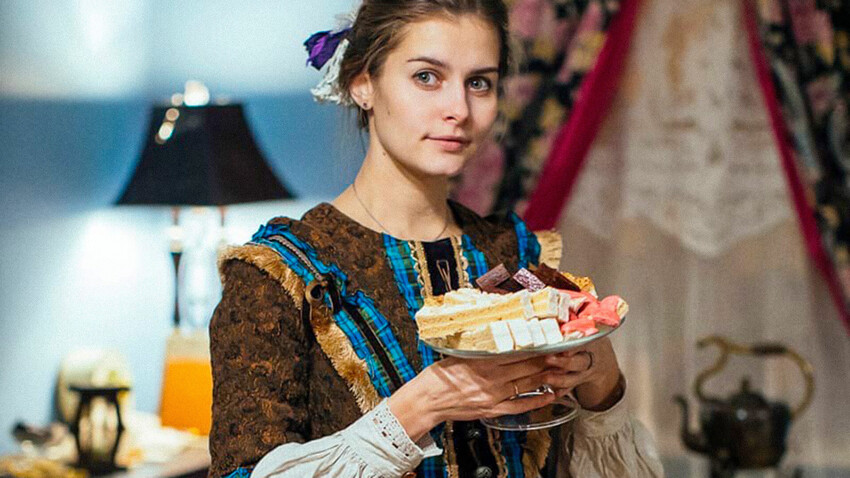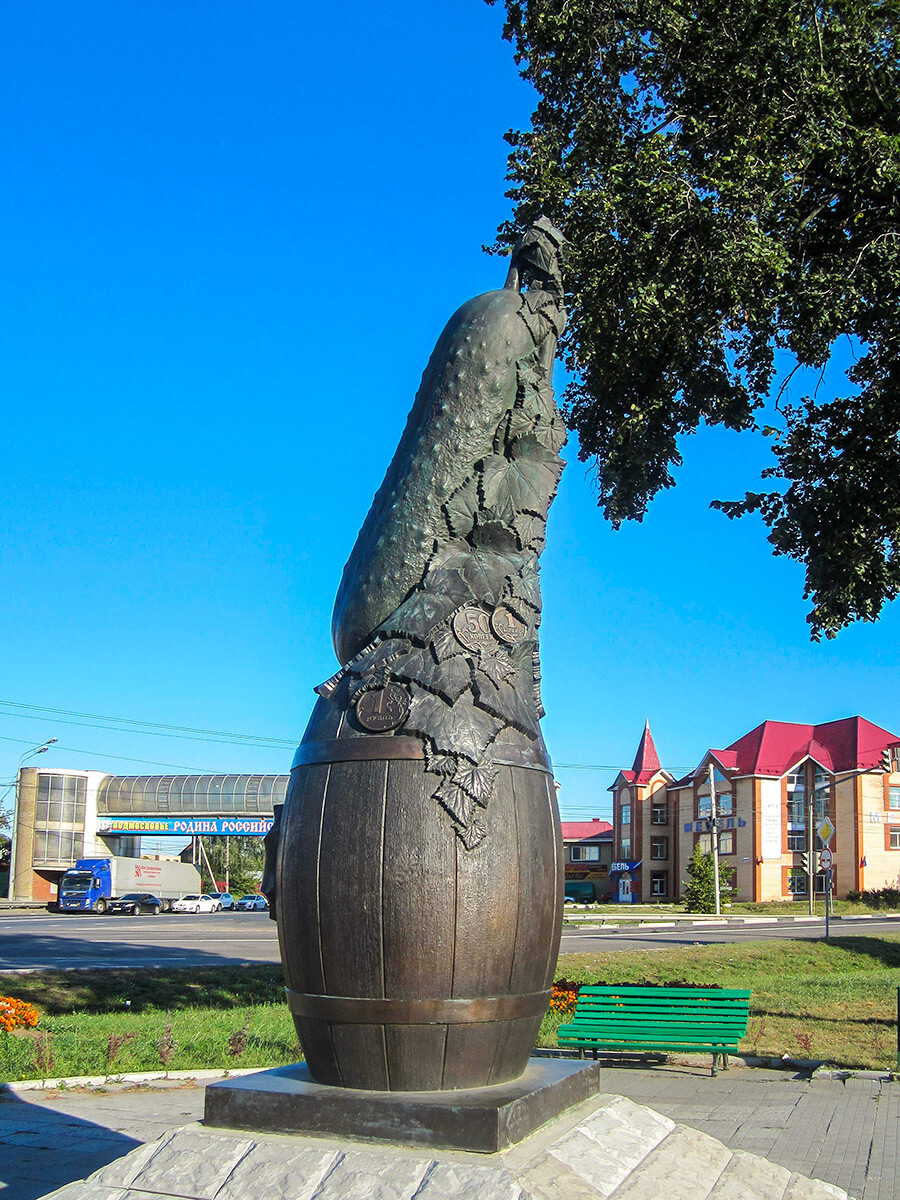
The town of Kolomna 90 km south-east of Moscow has always had many sour apples of the ‘Antonovka’ variety. And the locals invented pastila, a kind of jelly fruit confectionery, made from apples with honey or sugar. After the 1917 Bolshevik Revolution, this traditional candy was almost forgotten. In Soviet times, they called a kind of marshmallow from egg whites and sugar a 'pastila'. But, in the early 21st century, enthusiasts from Kolomna revived production of pastila according to traditional recipes. Now, everyone buys some as a souvenir to take home.
‘Kalach’ is a very ancient Russian street food. One should never eat the ‘handle’ (because, in the past, most people held it with dirty hands). So, thanks to this tradition, a proverb appeared in the Russian language: “Reach the handle”, meaning to get into an extremely difficult, almost hopeless situation. When you are even willing to eat the kalach's handle, metaphorically speaking.
And Kolomna is famous not only for its pastila, but also its ‘kalach’. In the 18th century, people began to add stuffing into it, thus turning it into a sandwich of sorts. And now, in Kolomna, you can try a ‘kalach’ with stewed goose, for example!
‘Kovrizhka’ is a kind of honey pastry, a flat bread with spices and it has been made in Russia since the ancient times. The delicacy was especially popular in Zaraisk, a town 180 km south-east of Moscow. Lots of merchants from all over the country traveled though Zaraisk, so trade and dining was quite active there. This meant that there were always a lot of apiaries and mills and, therefore, plenty of honey and flour.
The Zaraisk ‘kovrizhka’ has been known since the 19th century and, in 2018, the forgotten craft was revived by local residents. Now, you can try a ‘kovrizhka’ with honey and various spices (and even black pepper!) in the first Russian ‘kovrizhka cafe, not far from the Zaraisk Kremlin.
The city of Tula is actually most famous for its gingerbread. However, this treat was made everywhere in Russia. In the town of Dmitrov, 80 north of Moscow, they baked “printed” gingerbread, which was shaped with the help of special wooden molds. Old gingerbread boards have been preserved in the museum of the Dmitrov Kremlin.
Even today, gingerbread with fruit filling is baked in Dmitrov and, every year, the ‘Dmitrov Gingerbread Festival’ is held, where everyone can learn how to make this native Russian treat at special master classes.

Since the 1930s, residents of the town of Lukhovitsy, 135 km south-east of Moscow, are collectively engaged with one task - collecting cucumbers. Thanks to the fruitful soil on these lands in the floodplain of the Oka River, cucumbers grow actively and end up very delicious. Anyone who has ever traveled along the highway from Moscow to Ryazan can attest to seeing locals selling cucumbers right along the road, all incredibly beautiful and at ridiculously low prices. In Lukhovitsy, there is even a monument dedicated to the cucumber with the inscription: “To the bread winning cucumber from the grateful citizens of Lukhovitsy!”
In the 1960s, Alexei Kosygin, Chairman of the Council of Ministers of the USSR, paid an official visit to the U.S. And there, he tried some sugar paste candy, which he liked a lot! So, he brought a sample back home and the Institute of Confectionery Industry tried to unravel the recipe and create its own candy based on it. So, in 1972, the confectionery factory in the town of Podolsk, 45 km south of Moscow, produced the first series of ‘Podolchanka’ (literally 'female citizen of Podolsk') candies.The glazed fondant and cream candies are still produced there and their taste is known throughout the country.
The recipe for this sweet treat was invented by a rich merchant named Anna Maraeva, who owned weaving factories in the town of Serpukhov, 100 km south of Moscow. She had eight children and all of them loved candy, so she created a creamy honey fudge for them. There is a legend that, during World War I, there was a hospital for the wounded right in building of her factory. And the soldiers were fed exactly this calorie-laden fudge, so that they could recover faster. Due to the advent of cheap sugar, the ancient recipe was abandoned in the Soviet times; but, today, Serpukhov has revived production according to the traditional recipe.
Dear readers,
Our website and social media accounts are under threat of being restricted or banned, due to the current circumstances. So, to keep up with our latest content, simply do the following:
If using any of Russia Beyond's content, partly or in full, always provide an active hyperlink to the original material.
Subscribe
to our newsletter!
Get the week's best stories straight to your inbox